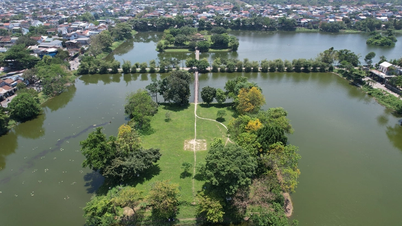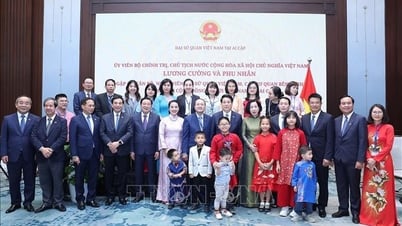Regarding this issue, Dak Lak Newspaper reporter had an interview with the Deputy Director of the Department of Health.
 |
Dak Lak is a province with a large population in the Central Highlands, with an estimated average population of 1,946,165 people in 2024, an increase of 0.76% over the same period last year, of which the urban population accounts for 26.1% of the total population, and the rural population accounts for 73.9%. The population growth rate of the province in recent years has tended to slow down, with the replacement fertility rate reaching 2.19 (the target is 2.1).
Dak Lak is in the golden population structure stage with a high proportion of working-age population. However, along with the general trend of the whole country, Dak Lak will also face the aging population process in the future. The imbalance of gender at birth is a common challenge of the whole country, and Dak Lak is no exception. Currently, the province's gender ratio at birth is 108/100 (boys/girls).
Dak Lak is a province with many ethnic groups living together, the population is unevenly distributed, the level of education and education of the people in general still has a big difference between urban and rural areas, between ethnic groups. The rate of pre-marital health check-ups, counseling, and screening for prenatal and neonatal diseases is not high.
In general, the population of Dak Lak in particular and the whole country in general is having positive changes under the impact of the current population policy, life expectancy is increasing, quality of life is improving, towards the goal of sustainable development. However, to achieve maximum efficiency, it is necessary to continue to have flexible solutions, suitable to local characteristics, especially striving to achieve and maintain the replacement fertility rate, improve population quality, increase the rate of pre-marital health check-ups, conduct prenatal and newborn screening, raise community awareness about infertility prevention, control of gender imbalance at birth, etc.
Like the whole country, the replacement fertility rate in Dak Lak has gradually decreased from a high fertility rate of 2.34 and is striving to reach the planned target of 2.1 by 2025.
Regarding the birth rate, for areas with currently low birth rates (mainly urban areas and economically developed areas), the new policy can promote a slight increase in birth rates and help Dak Lak maintain a sustainable replacement level of birth. This will contribute to rebalancing the birth rate gap between regions in the province.
For ethnic minority and rural areas, where the birth rate tends to be higher than the general level, although the Ordinance no longer limits the number of children, the propaganda on small family size, prosperity, equality, progress, happiness and sustainability will still be maintained. The birth rate in these areas can stabilize or decrease slightly if people are more aware of the benefits of raising children of quality rather than quantity.
Regarding population structure, the revised Population Ordinance will contribute to reducing the rate of population aging, improving gender imbalance at birth, and improving population quality through diverse population services.
Regarding population distribution, especially in ethnic minority areas, when living conditions and local development opportunities are improved, people will tend to settle down. The revised Population Ordinance together with related policies will create more favorable conditions for investment in infrastructure, health care, and education in ethnic minority areas.
The revised Population Ordinance offers Dak Lak a great opportunity to adjust its population indicators in a more sustainable manner. Giving people the right to decide on the number of children, along with strengthening support services and focusing on improving population quality, will help the province address existing challenges such as gender imbalance at birth, regional fertility disparities and improve the quality of life for ethnic minorities.
To encourage couples to have children and raise them in the best way, in my opinion, the top priorities in building family support policies should focus on aspects such as: direct and indirect financial support through housing support, medical and health care costs, maternity support, education, etc. Implement family-friendly labor and employment policies such as extending maternity leave and maternity pay to 7 months, flexible working hours so that parents can balance work and childcare; ensure no discrimination in recruitment and promotion for pregnant women or women with young children. At the same time, develop a system of family and child support services; counseling services, support for child rearing; develop entertainment areas, safe green spaces for children and families. Raise awareness of the value of having children, raising children and the role of the family in society; reduce social pressure through communication and education…
* Thank you!
(perform)
Source: https://baodaklak.vn/xa-hoi/202506/co-hoi-de-dieu-chinh-cac-chi-so-dan-so-d5511d1/

























![[Photo] Nghe An: Provincial Road 543D seriously eroded due to floods](https://vphoto.vietnam.vn/thumb/1200x675/vietnam/resource/IMAGE/2025/8/5/5759d3837c26428799f6d929fa274493)









































































Comment (0)